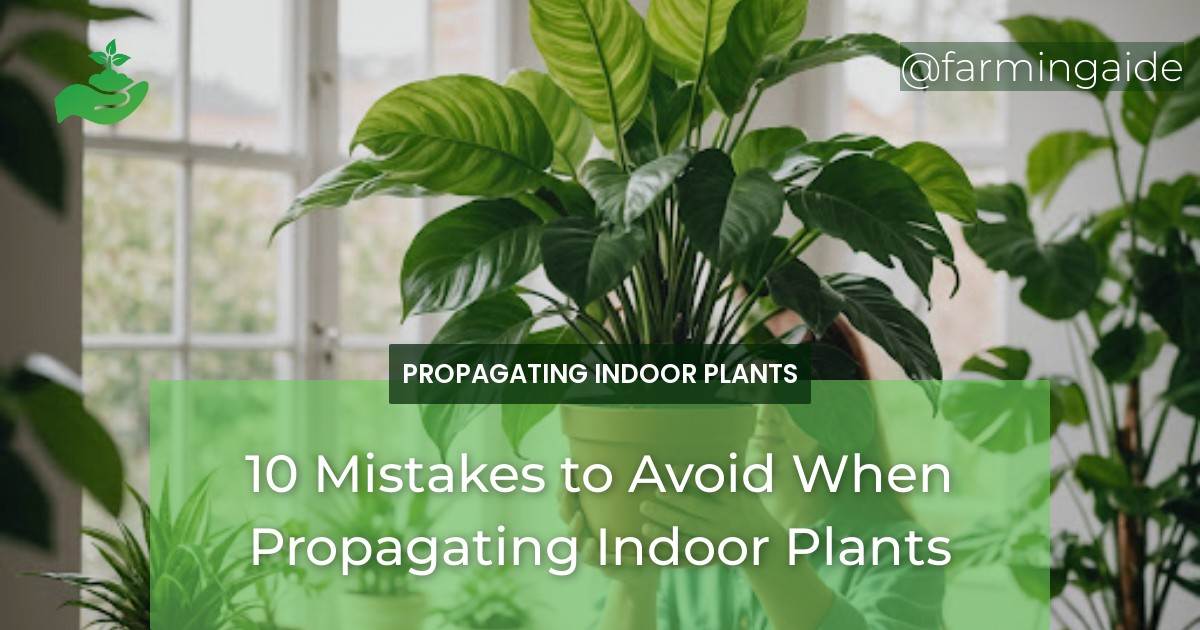When it comes to propagating indoor plants, it’s easy to get caught up in the excitement of creating new life from cuttings or leaves. However, without proper techniques and ideal conditions, even the most enthusiastic plant parent can end up with a failed propagation attempt. In this article, we’ll delve into the top 10 mistakes to avoid when propagating indoor plants, ensuring you’re well on your way to becoming a propagation pro.
Key Takeaways
- Choosing the wrong plant for propagation can lead to disappointing results.
- Improper cutting techniques and inadequate light conditions can hinder root development.
- Overwatering or underwatering can be detrimental to young roots.
- Not using a rooting hormone can reduce the chances of successful propagation.
- Inadequate soil quality, overcrowding, and neglecting humidity can also hinder propagation success.
Introduction to Indoor Plant Propagation
Indoor plant propagation is an excellent way to share plants with friends and family, multiply your favorite species, or simply have fun experimenting with different propagation methods. With the right techniques and conditions, you can successfully propagate a wide range of indoor plants.
Before we dive into the common mistakes to avoid, it’s essential to understand the basics of propagation and the various methods available.
Understanding the Basics of Propagation
Propagation involves creating a new plant from a parent plant using various techniques such as stem cuttings, leaf cuttings, division, or seed propagation. Each method requires specific conditions and care to ensure the new plant develops strong roots and grows into a healthy, thriving specimen.
Understanding the unique needs of the plant you’re propagating is crucial to achieving success.
Common Methods of Propagation
Some of the most popular propagation methods include:
| Method | Description |
|---|---|
| Stem Cuttings | Taking 2-3 inch stem cuttings from the parent plant, removing lower leaves, and planting in a propagation medium. |
| Leaf Cuttings | Removing healthy leaves from the parent plant and planting them in a propagation medium. |
| Division | Separating the roots of a mature plant to create multiple new plants. |
| Seed Propagation | Sowing seeds in a propagation medium and nurturing the seedlings. |
Mistake 1: Choosing the Wrong Plant for Propagation
Not all plants are created equal when it comes to propagation. Some species are naturally more challenging to propagate than others, and selecting the wrong plant can lead to disappointment and frustration.
Before attempting propagation, research the specific needs and characteristics of the plant you’re working with to ensure you’re setting yourself up for success.
ALSO READ
Identifying Suitable Plants for Propagation
Some plants are more amenable to propagation than others. Look for species with:
- Soft, succulent stems or leaves
- High water content in the leaves or stems
- A history of successful propagation
Common Plants That Are Difficult to Propagate
Some plants are notoriously challenging to propagate, including:
- Bulbous plants like tulips and daffodils
- Plants with woody stems, such as trees or shrubs
- Species with low water content, like cacti and succulents
Mistake 2: Improper Cutting Techniques
The way you take cuttings can significantly impact the success of your propagation attempt. A clean, precise cut is essential for promoting healthy root development.
Use the right tools and techniques to ensure you’re giving your cuttings the best possible start in life.
ALSO READ
The Right Tools for Cutting
Invest in a high-quality, sharp, and clean propagation tool, such as pruning scissors or clippers, to make precise cuts.
Disinfect your tools between cuts to prevent the spread of disease.
How to Make a Clean Cut
When taking a cutting, make a clean, angled cut just above a node (where a leaf meets the stem).
Remove lower leaves, leaving only a few at the top to reduce transpiration and promote rooting.
Conclusion: Mastering the Art of Indoor Plant Propagation
By avoiding these 10 common mistakes, you’ll be well on your way to becoming a propagation pro, successfully growing new plants and sharing your favorite species with friends and family.
Remember to stay patient, persistent, and gentle when working with your plants, and don’t be discouraged by setbacks – they’re an essential part of the learning process.
With practice and dedication, you’ll unlock the secrets of indoor plant propagation and be rewarded with a thriving, diverse collection of plants that bring joy and beauty to your home.


